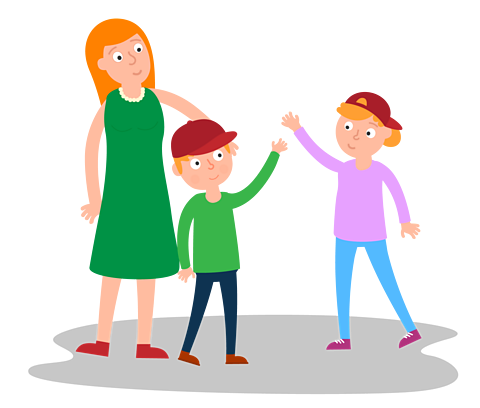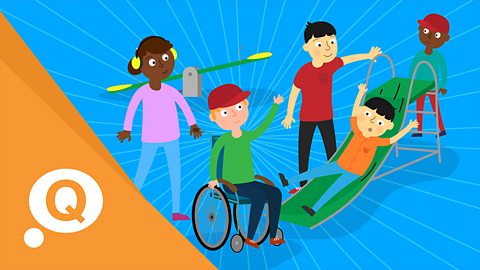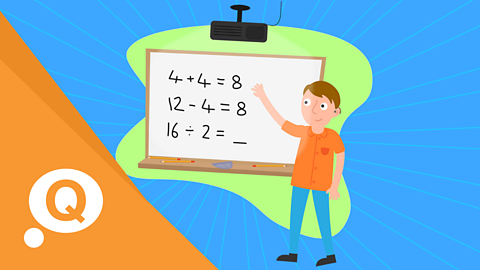Learn how to introduce your family with these handy words and phrases.
Family members in Spanish
| Masculine | Feminine |
|---|---|
| Sorry, something went wrongCheck your connection, refresh the page and try again. - a father | Sorry, something went wrongCheck your connection, refresh the page and try again. - a mother |
| Sorry, something went wrongCheck your connection, refresh the page and try again. - a brother | Sorry, something went wrongCheck your connection, refresh the page and try again. - a sister |
| Sorry, something went wrongCheck your connection, refresh the page and try again. - a grandfather | Sorry, something went wrongCheck your connection, refresh the page and try again. - a grandmother |
| Sorry, something went wrongCheck your connection, refresh the page and try again. - an uncle | Sorry, something went wrongCheck your connection, refresh the page and try again. - an aunt |
| Sorry, something went wrongCheck your connection, refresh the page and try again. - a cousin (male) | Sorry, something went wrongCheck your connection, refresh the page and try again. - a cousin (female) |
(To say 'a' use Sorry, something went wrongCheck your connection, refresh the page and try again. if it’s a masculine noun and Sorry, something went wrongCheck your connection, refresh the page and try again. if it’s a feminine noun)
Saying 'I have'
To say 'I have' you can use Sorry, something went wrongCheck your connection, refresh the page and try again. (from the verb Sorry, something went wrongCheck your connection, refresh the page and try again.).
For example:
- Sorry, something went wrongCheck your connection, refresh the page and try again. - I have a brother
- Sorry, something went wrongCheck your connection, refresh the page and try again. - I have a mother
- Sorry, something went wrongCheck your connection, refresh the page and try again. - I have two cousins
'I don't have'
To say you don't have something, you can use the phrase Sorry, something went wrongCheck your connection, refresh the page and try again. (I don't have…)
- Sorry, something went wrongCheck your connection, refresh the page and try again. - I don't have brothers
Asking names

To ask 'What is your… called?' use the question:
Sorry, something went wrongCheck your connection, refresh the page and try again. for one person (singular)
or
Sorry, something went wrongCheck your connection, refresh the page and try again. for two or more people (plural)
For example:
Sorry, something went wrongCheck your connection, refresh the page and try again. - What’s your mum called?
Sorry, something went wrongCheck your connection, refresh the page and try again. - What’s your dad called?
Sorry, something went wrongCheck your connection, refresh the page and try again. - What are your brothers called?

Giving names
To talk about one person’s name (singular), use Sorry, something went wrongCheck your connection, refresh the page and try again. – He / She is called
For example:
Sorry, something went wrongCheck your connection, refresh the page and try again. - He is called Angus
Sorry, something went wrongCheck your connection, refresh the page and try again. - She is called Maria
To talk about two or more people’s names (plural) use Sorry, something went wrongCheck your connection, refresh the page and try again. - They are called… and…
For example:
- Sorry, something went wrongCheck your connection, refresh the page and try again. - They are called Sally and Paul
Saying 'My'

'My' in Spanish is either Sorry, something went wrongCheck your connection, refresh the page and try again. (singular) or Sorry, something went wrongCheck your connection, refresh the page and try again. (plural).
This means 'my brother' would be Sorry, something went wrongCheck your connection, refresh the page and try again. and 'my brothers' would be Sorry, something went wrongCheck your connection, refresh the page and try again..
You can then add either Sorry, something went wrongCheck your connection, refresh the page and try again. (singular) or Sorry, something went wrongCheck your connection, refresh the page and try again. (plural) to the person’s name.
For example:
- Sorry, something went wrongCheck your connection, refresh the page and try again. - My dad is called Jakob
- Sorry, something went wrongCheck your connection, refresh the page and try again. - My sister is called Alisha
- Sorry, something went wrongCheck your connection, refresh the page and try again. - My parents are called Farha and Donald

The 'í' sound
You might have noticed that some letters in Spanish have an accent, such as í.
The accent is always above a vowel, as in Sorry, something went wrongCheck your connection, refresh the page and try again. (uncle), and it lets you know to put stress on this part of the word.
The í sound is pronounced as an ‘ee’.
More on Talking topics
Find out more by working through a topic
- count3 of 11

- count4 of 11

- count5 of 11

- count6 of 11
